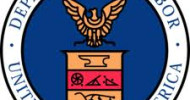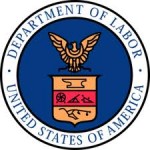- Home
- News
- Features
- Topics
- Labor
- Management
- Opinions/Blogs
- Tools & Resources
Home » Archives by category » News

Jobs Increased 339,000 In May, Unemployment Up 0.3% To 3.7%
Total nonfarm payroll employment increased by 339,000 in May, and the unemployment rate rose by 0.3 percentage point to 3.7 percent, the U.S. Bureau of Labor Statistics reported today. Job gains occurred in professional and business services, government, health care, construction, transportation and warehousing, and social assistance. This news release presents statistics from two monthly […]
Investigation into worker’s severe arm injury finds Cusseta auto parts manufacturer, supplier willfully ignored safety precautions
15/10/2021 Comments Off on Investigation into worker’s severe arm injury finds Cusseta auto parts manufacturer, supplier willfully ignored safety precautions
October 15, 2021Investigation into worker’s severe arm injury finds Cusseta auto partsmanufacturer, supplier willfully ignored safety precautionsOSHA proposes $205K in penalties for Leehan America Inc.
CUSSETA, AL – A 64-year-old employee suffered an arm amputation, federal workplace safety investigators found, as a result of a Cusseta auto parts manufacturer and supplier’s willful failure to follow required safety standards.
The U.S. Department of Labor’s Occupational Safety and Health Administration determined the assembler, working at Leehan America Inc., sustained the severe injury when struck by a forklift on April 14, 2021. OSHA investigators cited the company with a willful violation after learning they allowed the forklift’s driver to operate the vehicle without training. In addition, OSHA cited Leehan America with a repeat violation when they found no machine guarding in place, an amputation hazard for which the agency cited the company in April 2018.
OSHA also found the company failed to ensure the use of energy control procedures and did not provide employees with lockout/tagout devices. Leehan America also failed to conduct forklift evaluations for operators that were trained at least every three years, and examine forklifts and remove unsafe vehicles from service as required.
OSHA has proposed $205,384 in penalties for Leehan America.
“Leehan America knew the requirements and willfully ignored them, and a worker suffered a life-changing injury,” said OSHA Area Director Jose Gonzalez in Mobile, Alabama. “Adding to the tragedy is the knowledge that if appropriate safety precautions were taken, the incident was preventable. There is no excuse for taking shortcuts that put workers’ safety and health in jeopardy.”
The company has 15 business days from receipt of its citations and penalties to comply, request an informal conference with OSHA’s area director, or contest the findings before the independent Occupational Safety and Health Review Commission.
Under the Occupational Safety and Health Act of 1970, employers are responsible for providing safe and healthful workplaces for their employees. OSHA’s role is to ensure these conditions for America’s workers by setting and enforcing standards, and providing training, education and assistance. Learn more about OSHA.
# # #
Media Contacts:
Eric R. Lucero, 678-237-0630, lucero.eric.r@dol.govErika B. Ruthman, 678-237-0630, ruthman.erika.b@dol.gov
Release Number: 21-1837-ATL (274)
U.S. Department of Labor news materials are accessible at http://www.dol.gov. The department’s Reasonable Accommodation Resource Center converts departmental information and documents into alternative formats, which include Braille and large print. For alternative format requests, please contact the department at (202) 693-7828 (voice) or (800) 877-8339 (federal relay).
Continue reading …Contractor faces 2 serious citations after US Department of Labor finds safety failures led to welder’s death at Bonner Bridge demolition project
15/10/2021 Comments Off on Contractor faces 2 serious citations after US Department of Labor finds safety failures led to welder’s death at Bonner Bridge demolition project
October 15, 2021Contractor faces 2 serious citations after US Department of Labor findssafety failures led to welder’s death at Bonner Bridge demolition project OSHA finds contractor overloaded bridge section, leading to collapse and fatal fall
RODANTHE, NC – A federal workplace safety investigation found that established procedures were ignored, causing a 42-year-old welder on the Bonner Bridge in Rodanthe to fall more than 50 feet to his death when the structure collapsed on April 14.
Employed by PCL Civil Constructors Inc., the worker was torch-cutting crossbeams on a section of the bridge where the company discarded concrete for removal. The concrete’s weight caused the structure to collapse and the welder to fall. PCL Civil Constructors is the lead contractor for the project, which includes dismantling sections of the bridge built in 1963.
The U.S. Department of Labor’s Occupational Safety and Health Administration cited PCL Civil Constructors with two serious violations for failure to use engineering surveys or calculations to control the structure’s stability and avoid unplanned collapses. OSHA also found the employer overloaded bridge sections beyond weight capacity and exposed workers to struck-by and crush-by hazards. OSHA has proposed $23,210 in penalties.
“PCL Civil Constructors violated federal safety standards and a worker needlessly died as a result,” said OSHA Area Director Kimberley Morton in Raleigh. “If they had followed well-known standards, this tragic loss of life could have been prevented.”
Under the Occupational Safety and Health Act of 1970, employers are responsible for providing safe and healthful workplaces for their employees. OSHA’s role is to ensure these conditions for America’s workers by setting and enforcing standards, and providing training, education and assistance. Learn more about OSHA.
# # #
Media Contacts:
Erika B. Ruthman, 678-237-0630, ruthman.erika.b@dol.govEric R. Lucero, 678-237-0630, lucero.eric.r@dol.gov
Release Number: 21-1827-ATL (275)
U.S. Department of Labor news materials are accessible at http://www.dol.gov. The department’s Reasonable Accommodation Resource Center converts departmental information and documents into alternative formats, which include Braille and large print. For alternative format requests, please contact the department at (202) 693-7828 (voice) or (800) 877-8339 (federal relay).
Continue reading …‘It’s a sweat factory’: Instacart workers ready to strike for pay and conditions
15/10/2021 Comments Off on ‘It’s a sweat factory’: Instacart workers ready to strike for pay and conditions
Gig economy‘It’s a sweat factory’: Instacart workers ready to strike for pay and conditionsGig workers report falling wages, unmanageable orders and lack of concern from the company Gloria Oladipo@gaoladipoFri 15 Oct 2021 07.39 EDTLast modified on Fri 15 Oct 2021 09.13 EDTFor Instacart workers across the country, the popular grocery delivery app promised flexibility and a solid wage, perks that enticed thousands to join the app during the height of the Covid-19 pandemic.But amid worsening working conditions including plummeting pay, safety concerns, and a punitive rating system, Instacart employees, known as shoppers, will be staging a walkout on 16 October and will continue striking until the company meets their demands for better treatment.Workers, uniting as the Gig Workers Collective, have been organizing against Instacart for years, citing what they say is a trend of unresponsiveness from the company in the face of their concerns. The collective’s asks are mostly for a restoration of features the company has dropped: reinstating Instacart’s commission pay model, paying its shoppers per order rather than bundling them, a 10% default tip instead of the current 5%, transparency about how orders are assigned, and a rating system that doesn’t hurt shoppers forproblems outside their control.Shoppers have also asked for occupational death benefits, noting the increasing dangers shoppers face on the job.Ahead of the walk-off, the Guardian spoke to three Instacart shoppers on their journey to joining Instacart, problems they have encountered since joining the app, and why …
Continue reading …Ships backed up outside US ports pumping out pollutants as they idle
15/10/2021 Comments Off on Ships backed up outside US ports pumping out pollutants as they idle
Supply chain crisisShips backed up outside US ports pumping out pollutants as they idleThe Ports of Long Beach and Los Angeles, two of the nation’s busiest, create more than 100 tons a day of smog that choke local communities Gabrielle Canon in Los Angeles@GabrielleCanonFri 15 Oct 2021 07.05 EDTLast modified on Fri 15 Oct 2021 07.07 EDTDozens of behemoth cargo ships adorned with tall stacks of brightly colored containers still dot the coastline off southern California. Part of a shipping bottleneck plaguing US ports, the ships – their diesel-fueled engines always ablaze – are also pumping out pollutants as they idle, anchored off-shore.The clogged supply chain has been described as an economic calamity as the delayed cargo caused shortages in common goods and drove consumer prices higher. But environmentalists and public health advocates are concerned it’s also turning into a climate catastrophe.The container ships awaiting entry are compounding the levels of contaminants that have long come from the ports and that impact the local environment, coastal communities and ambitious carbon targets needed to curb the worst effects of climate change. With the holiday shopping frenzy just around the corner, there are now concerns the problem may get worse before it gets better.“The conversation right now is really focused on supply chain backlog and refilling the shelves with products – but that’s not the whole story,” said Madeline Rose, the climate campaign director for Pacific Environment, a climate advocacy organization that has …
Continue reading …Privacy fears as Moscow metro rolls out facial recognition pay system
15/10/2021 Comments Off on Privacy fears as Moscow metro rolls out facial recognition pay systemRussiaPrivacy fears as Moscow metro rolls out facial recognition pay systemCampaigners say Face Pay, launched in over 240 stations, is ‘dangerous step’ in efforts to control population Pjotr Sauer in MoscowFri 15 Oct 2021 06.53 EDTLast modified on Fri 15 Oct 2021 11.12 EDTThe Moscow metro has rolled out what authorities have lauded as the world’s first mass-scale facial recognition payment system, amid privacy concerns over the new technology.The cashless, cardless and phoneless system, named Face Pay, launched at more than 240 stations across the Russian capital on Friday.“Now all the passengers will be able to pay for travel without taking out their phone, metro or bank card,” the Moscow mayor, Sergey Sobyanin, tweeted on Thursday evening.To activate Face Pay, Sobyanin said, passengers will need to connect their photo, bank card and metro card to the service through the metro’s mobile app. “It will be enough just to look at the camera to pass through the turnstiles,” Sobyanin said.The Moscow authorities, who expect up to 15% of metro passengers will use Face Pay regularly in the next three years, said the system would quicken the flow of people, particularly at busy times.“Moscow is the first in the world to introduce Face Pay on such a scale. The technology is new and very complex, we will continue to work on improving it,” the mayor added.Authorities have said passengers’ data will be “securely encrypted”, saying the information collected will be stored in data …
Continue reading …‘We are not machines’: Hollywood workers poised to strike for better conditions
15/10/2021 Comments Off on ‘We are not machines’: Hollywood workers poised to strike for better conditionsUS unions‘We are not machines’: Hollywood workers poised to strike for better conditionsUnion leaders say a strike will start Monday if there is no deal with studios as workers describe low pay and grueling days without breaks Michael SainatoFri 15 Oct 2021 05.00 EDTLast modified on Fri 15 Oct 2021 12.55 EDTAt the start of the pandemic, Hollywood productions abruptly shut down, leaving many workers out of work before things began to resume with Covid-19 safety protocols in place.Since then, workers in Hollywood say they have worked long schedules and endured increased workloads, including staggering work because of social distancing; wearing and distributing personal protective equipment through long work days; and regularly getting tested for Covid-19.“We were working at breakneck speeds, and that was something that was supposed to have changed. We were supposed to have the time we needed to work in that kind of environment,” said Mike Loomer, a set dresser in Hollywood and International Alliance of Theatrical Stage Employees (IATSE) Local 44 member.“The only thing that changed is what we had to endure to make the product that they had to have to get out for the public to see.”Studios will again go quiet around the US as IATSE leaders say its 60,000 members will go on strike from 12.01 PT on Monday if a deal is not reached with employers. It would be the first such national strike since the IATSE was formed 128 years ago.Members of …
Continue reading …Boeing pilot indicted for allegedly deceiving US regulators over 737 Max
14/10/2021 Comments Off on Boeing pilot indicted for allegedly deceiving US regulators over 737 MaxBoeingBoeing pilot indicted for allegedly deceiving US regulators over 737 MaxMark A Forkner accused of giving FAA false information about flight-control system in plane that was involved in two crashes Associated PressThu 14 Oct 2021 20.25 EDTA Boeing pilot involved in testing the 737 Max jetliner was indicted on Thursday by a federal grand jury on charges of deceiving safety regulators who were evaluating the plane, which was later involved in two deadly crashes.The indictment accuses Mark A Forkner of giving the Federal Aviation Administration false and incomplete information about an automated flight-control system that played a role in the crashes, which killed 346 people.Prosecutors said that because of Forkner’s “alleged deception”, the system was not mentioned in key FAA documents, pilot manuals or pilot-training material supplied to airlines.The flight-control system automatically pushed down the noses of Max jets that crashed in 2018 in Indonesia, and 2019 in Ethiopia. The pilots tried unsuccessfully to regain control, but both planes went into nosedives minutes after taking off.Most pilots were unaware of the system, called the maneuvering characteristics augmentation system, until after the first crash.Boeing directors to face investor lawsuit over 737 Max fatal crashesRead moreForkner, 49, was charged with two counts of fraud involving aircraft parts in interstate commerce and four counts of wire fraud. Federal prosecutors said he was expected to make his first appearance in court on Friday in Fort Worth, Texas. If …
Continue reading …Ipswich apprentice butcher encourages others to consider industry
14/10/2021 Comments Off on Ipswich apprentice butcher encourages others to consider industry
A trainee butcher who decided to do it full-time after starting as a Saturday job when she was 13 has encouraged others to consider it as a career.Annie Jones, 18, is six months into her two-year apprenticeship at G Debman Butchers in Ipswich.She said: “I love to be able to tell people because I don’t think it’s spoken about enough and you don’t get told about this kind of career at school.”I don’t think people realise that these careers are out there for them. And actually they are really exciting, really enjoyable and really good fun.”Video by Stuart HowellsHear Annie’s story and more like it on Mark Murphy at breakfast on BBC Radio Suffolk
Continue reading …Ipswich apprentice butcher encourages others to consider industry
14/10/2021 Comments Off on Ipswich apprentice butcher encourages others to consider industry
A trainee butcher who decided to do it full-time after starting as a Saturday job when she was 13 has encouraged others to consider it as a career.Annie Jones, 18, is six months into her two-year apprenticeship at G Debman Butchers in Ipswich.She said: “I love to be able to tell people because I don’t think it’s spoken about enough and you don’t get told about this kind of career at school.”I don’t think people realise that these careers are out there for them. And actually they are really exciting, really enjoyable and really good fun.”Video by Stuart HowellsHear Annie’s story and more like it on Mark Murphy at breakfast on BBC Radio Suffolk
Continue reading …



